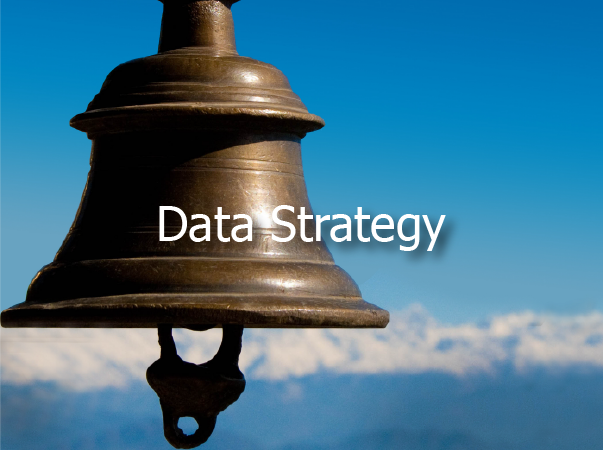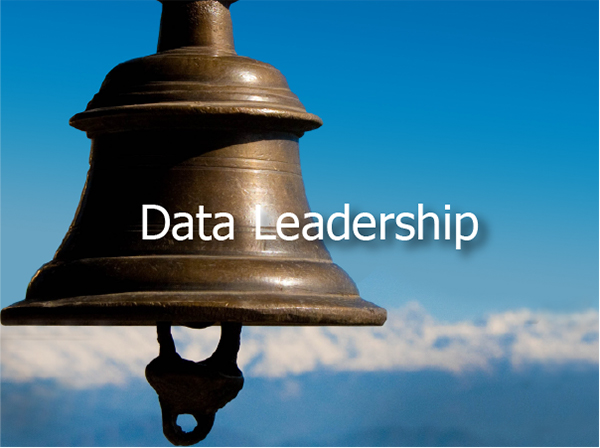A data strategy is a reliable touchstone created by an organization for businesspeople to apply when confronting challenges in executing data activities to meet or support a business strategy. It offers direction when generating, updating, storing, and consuming data to better perform these tasks.
Managers use a data strategy to plan, assess, and synchronize data processes and operations across their enterprises. That way, data strategies help companies evolve to manage data efficiently and effectively to achieve their business goals through good decision-making and increase organizational data literacy in a way that minimizes risks.
Data strategies give everyone a big picture of what their companies want to accomplish with their data and why, so people, processes, and technologies can successfully improve working with data in the long term and day to day. Professionals turn to the data strategy roadmap, a blueprint of the details, when completing specific steps.
Like business strategies, data strategies change to adapt to new customer expectations and market conditions. So, a data strategy is not a result, but rather a tool to evolve, drive, and coordinate data for the business’s needs.
Data Strategy Defined
A data strategy can impact a company, regardless of maturity or industry, by influencing and revealing how consistently and on track people agree to ideas, beliefs, and ways of behaving with data. This kind of strategy can also instigate changes toward a data-driven culture and align and advance business processes and operations.
A data strategy’s strengths to improve organizational culture come from data standards, collaborations, and reuse. These components tie into a holistic, systematic, and intentional approach, the data strategy that forms a pattern in a stream of decisions.
Consequently, organizations use a data strategy to inform and work with other data management components, such as data governance, a formalization of data management policies, procedures, and roles, and data architecture, all data infrastructures, and their pieces. Moreover, a data strategy helps companies prioritize resources, such as roles and technologies, during data operations.
Like other business functions, such as a financial strategy, a data strategy integrates its direction in all work priorities, goals, and objectives, especially critical ones. So, all employees interface with a data strategy as they work with data.
Level Up Your Data Skills
Build confidence in your role with 250+ hours of expert training across key data topics – all on your schedule. (Use code Cyber2025 to save 25% through December 8, 2025!)
Components of a Data Strategy
A data strategy delivers a roadmap detailing the steps to align data processes and priorities across the organization. This roadmap can be part of a PowerPoint presentation or a website that describes specific goals, people, timelines, finances, and software.
In the process of creating, agreeing to, and using a Data Strategy and the Data Strategy roadmap, companies deliver the following:
Increased Data Literacy
- An understanding of the data strategy as it currently exists, along with all the legacy data systems and cultural impacts on data literacy
- Training and materials for staff and other stakeholders
- A common lexicon, such as a business glossary
- Increased sharing of information across the organization
Visible Improvements in Data Management
- A SWOT analysis that considers current strengths, weaknesses, opportunities, and threats as a baseline and sets a target for improvement
- Organizational guidance on the steps to take to arrive at the desired data strategy implementation
- Metrics and measurement of success in achieving the desired data strategy execution
- Prioritization of tactics that increase efficiency in data management and business outcomes
- Business use cases that provide a return on investment (ROI) on data strategy-related activities
Standardization Across the Enterprise
- Identification and investment of resources – people, processes, and technologies – required to carry out and support a more robust data management vision
- Suitably designed and understood roles and responsibilities
- A better understanding of data requirements and standards needed to meet business objectives
Better Use of Technology
- More relevant computer processes, as engineers and developers factor the data strategy into system configurations and data operations
- Adjustments to make systems more secure
- Greater understanding of metadata and support of metadata management
Why Is a Data Strategy Important?
A data strategy impacts an organization’s ability to compete, get insights to make decisions, run business operations efficiently, and stay compliant with data regulations like the General Data Protection Regulation (GDPR). It is a crucial Data Management foundation that provides a way to execute comprehensive, consistent, and responsible practices.
It directs appropriate resources to data governance for more efficient data access and better security. Also, a data strategy shows how to build a data architecture, providing the framework for data management.
As a company inputs more data, with a greater variety, faster, it needs to find a way to make all this information usable and relevant by having higher data quality without wasting time or money. A data strategy allocates people, systems, and processes to make and keep data quality good enough across the organization.
As more companies turn to generative AI to improve efficiency and get recommendations, they need good data that trains AI models and encompasses insights passed along by the AI models. Success in these initiatives hinges on the fact that “AI is inherently a data technology.” Most AI problems are data problems that need guidance from a data strategy.
Applied Data Governance Practitioner Certification
Validate your expertise – accelerate your career. (Use code Cyber2025 to save 25% through December 8, 2025!)

Why Formalize the Strategy Across an Organization?
Many organizations have a business strategy, but nearly half do not have a formalized data strategy. Regardless, a data strategy exists in an organization by default as individual teams apply best practices in their work with data. So, the company’s data strategy may not be coherent.
Aspects of data management tend to make it into a business strategy, such as a link between data and business impact or buy-in of data policies and programs. However, while executing the business strategy, data becomes an afterthought.
For example, IT may implement different data management systems for marketing to track prospects/customers, and support to track and close help desk tickets. While both departments operate individual data activities, according to the business strategy, their customer data can become siloed and unusable across all business units.
This situation results in poorer data quality, as some information may be duplicated or incorrect among different departmental data systems. A well-thought-out and explicit data strategy defines how to share and integrate data through various units and reuse it in alignment with the business strategy.
Common Use Cases
Data strategies have many uses, such as:
- Making informed decisions: For example, USTRANSCOM used a data strategy to manage and secure complex data for better decision-making related to its mission.
- Understanding customers: A SaaS-based fintech startup was falling short of meeting its sales target. Ehsan Shahabi helped the firm develop a data strategy and steps that identified inefficiencies in converting its extensive customer base.
- Improving processes: A global technology firm underwent rapid growth and needed to develop a data strategy and a roadmap. Baker Tilly did this by allocating the company’s resources better, establishing a foundation, and increasing efficiency.
- Making intelligent products and services: A national retailer, GGV, struggled with disparate reporting systems from various vendors. DataSmiles created a data strategy to streamline reporting functionality on a centralized hub.
- Identifying new, more innovative products and solutions: Mastercard wanted to use AI and ML to develop new products and solutions for its business, so it put together a command center operation. To ensure consistency, Mastercard has a team of data strategy leaders and subject matter experts (SMEs) who work alongside business teams across the firm to ensure alignment.
- Ensure data is fair, transparent, and competitive: The US Consumer Finance Protection Bureau (CFPB) wanted fair, transparent, and competitive data after consulting with 20 program offices to understand the organization’s needs, and created five strategic priorities. Consumers’ lives have improved, consequently.
How Do Professionals Interface with a Data Strategy?
Everyone offers feedback on and executes their work according to enterprise data strategies. Several professionals work together to draft an appropriate strategy based on various technical and business expertise. Depending on an organization’s culture, specific roles may include:
- Chief data officers (CDOs): A CDO leads all strategic data activities and data as a strategic asset that drives business and helps lead the company in new directions.
- Data governance leads: Data governance leads create, implement, and support the data governance program, which formalizes data policies, procedures, and roles. To do so, data governance leads allocate assets, and prioritize activities along with the data strategy. Conversely, data governance leads assess the data strategy in the data governance context and suggest updates or changes as needed.
- Data architects: Data architects design and oversee the implementation of an enterprise’s data infrastructure in its totality and components. Data architects are responsible for directing data architecture resources and activities aligned with the data strategy. Data architects inform executives and data governance leads about progress in meeting the data strategy in case resources need to be allocated differently.
- Data strategists: Data strategists are responsible for developing and aligning data strategies with the business strategy. They collaborate with stakeholders and those in data governance.
- Data engineers: Data engineers build the data infrastructure according to data architecture requirements, which align with the data strategy. They also administer the implementation and use of this data infrastructure, a critical job. Data engineers give feedback about data strategy activities.
- Data analysts: Data analysts get business insights and intelligence on the data they use. They play an essential role in providing feedback about the data strategy and its implementation.
- Data scientists: Data scientists use statistics, mathematics, data mining, and computer science to analyze data sets for observable trends and patterns. Data scientists align their activities with data strategies and provide feedback.
Image used under license from Shutterstock
CDMP Certification and the DMBOK Learning Plan
Train to get certified as a data management professional. (Use code Cyber2025 to save 25% through December 8, 2025!)





